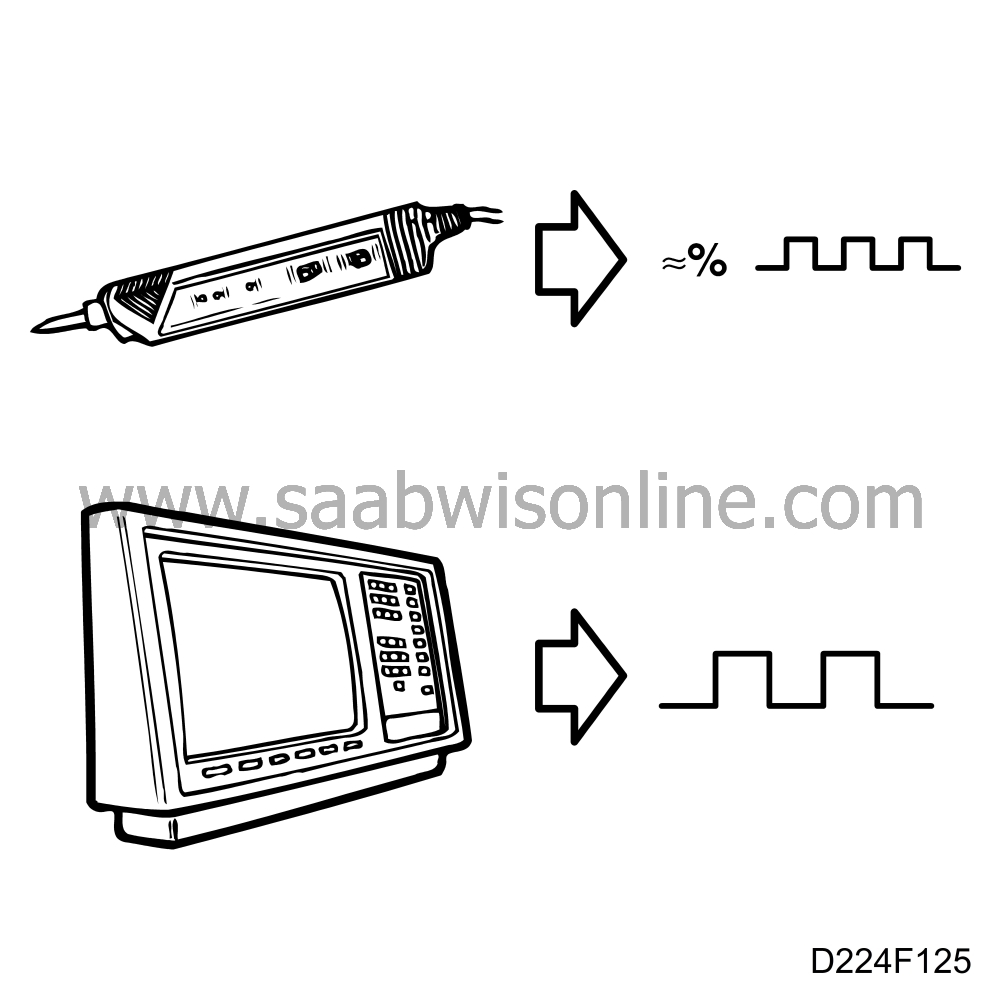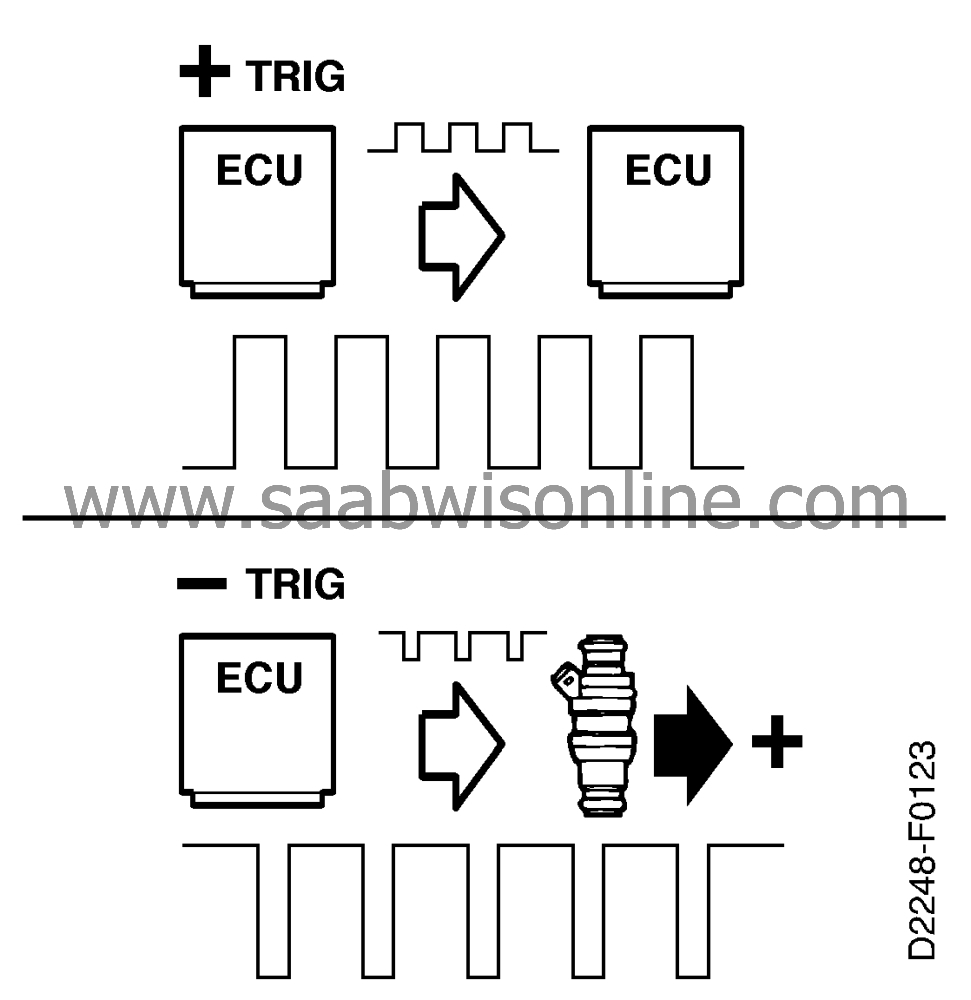Measurement of PWM
| Measurement of PWM |
| Measurement of PWM |
PWM signals , i.e. communication between electronic control modules, are generally positively triggered, in other words the pulse is a Batt+ pulse.
Other PWM outputs (inputs) are generally negatively triggered, e.g. the fuel injection valves which are constantly supplied with positive voltage and pulsed to ground from the electronic control module.
| Measuring with a voltmeter |

If you measure PWM with a voltmeter, the voltmeter will show the average voltage in the wire, so that if the pulse ratio increases a higher average voltage is obtained. A rough estimate of the pulse ratio can be obtained with the voltmeter. At a pulse ratio of 9 %%, approx. 1.2 V (0.09 x 13 V = 1.17 V) is usually obtained. In the case of positively triggered PWM, connect the red cable to the wire and the black measuring cable to safe ground.
| Measuring with ISAT or multimeter with pulse-measuring function |
Connect the red measuring cable to the wire and the black measuring cable to safe ground. Then select positive or negative triggering. It is now possible to measure frequency, length of pulse and pulse ratio.
| Measurement with Logic Probe |

Connect positive battery voltage and safe ground and then place the measuring point on the wire. The Logic Probe shows if there are any pulses and gives a rough estimate of the pulse ratio.
| Measurement with oscilloscope |
It is possible to read off the frequency and pulse time and at the same time obtain a picture of the pulses. It can be seen how the pulse width changes when the value of the information is changed.
| Further PWM information |
Further information on PWM is given in Service Manuals 3:2 and 2:5
 .
.



